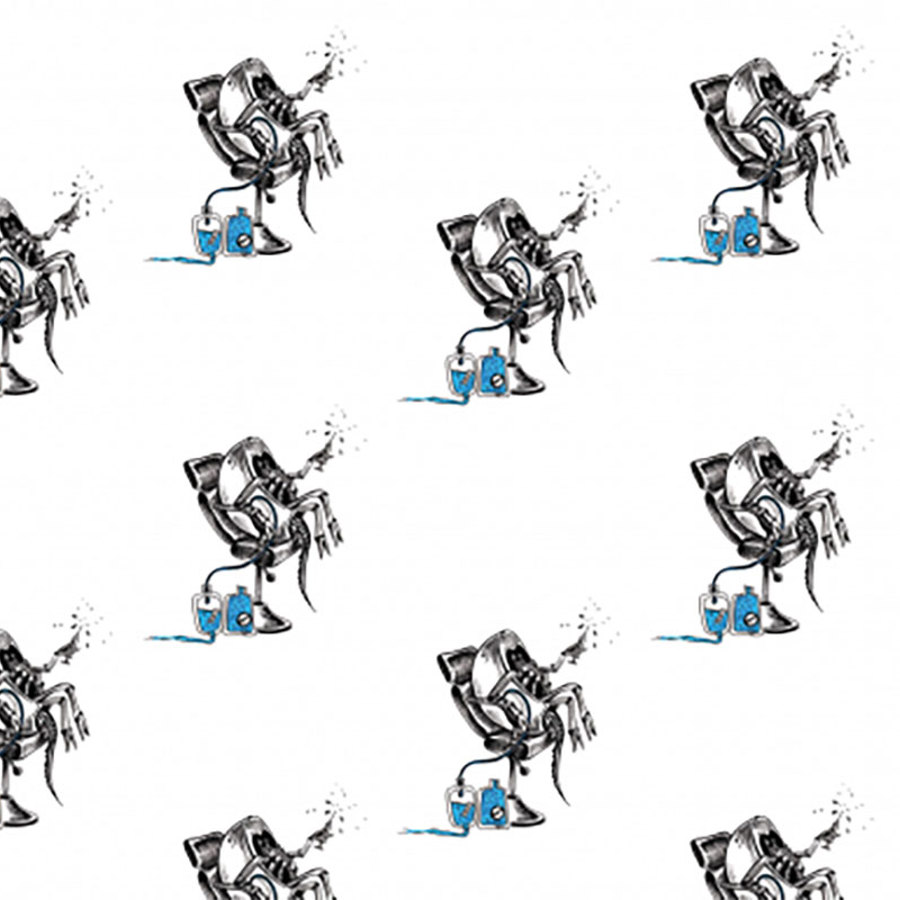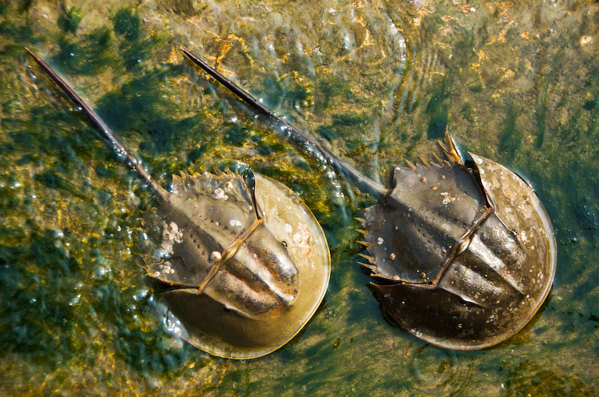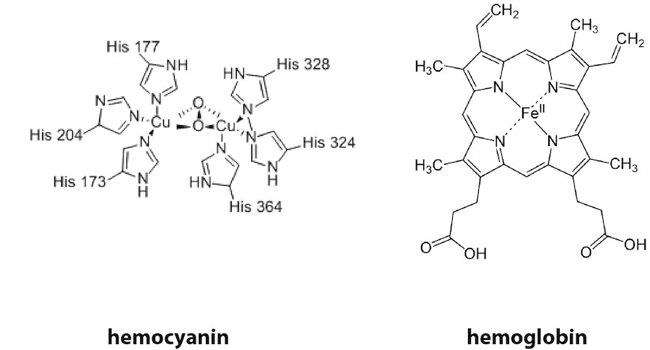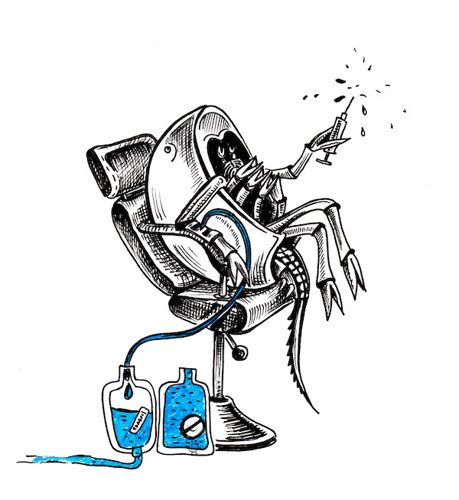
Do similar traits in different species imply shared genes?
February 15, 2022

- Related Topics:
- Speciation,
- Comparing species,
- Evolution
A curious adult from Idaho asks:
“To my very limited understanding, if one species has a trait, it implies that other species may have the genes to express that trait. The horseshoe crab has blood based on copper rather than iron. Is it possible that humans may have the genes, though unexpressed, for blood based on copper?”
No, humans aren’t hiding any genes that we could “turn on” to transform our blood into the magical blue blood of horseshoe crabs. Just the presence of a similar trait in different species doesn’t mean that all species have the same trait hidden somewhere in their DNA.
It’s true that the molecules responsible for a horseshoe crab’s copper-based blood and a human’s iron-based blood serve the same function. But they’re actually genetically unrelated. They’re based on different genes, which have entirely different evolutionary histories.
So let’s take a trip to prehistoric Earth to understand these stories.

Gotta go my own way
The story of these oxygen-circulating blood systems begins about 2 billion years ago. Around this time, there was an event called the Great Oxygen Catastrophe! Before the Catastrophe, the Earth’s atmosphere had virtually no oxygen. This wouldn’t have been very friendly to us modern-day mouth breathers, but the organisms living on Earth 2 billion years ago were used to this atmosphere. They had evolved biological systems that allowed them to live in an oxygenless place.
But then along came cyanobacteria. These tiny ocean-dwellers began to photosynthesize and release oxygen into the atmosphere.
This really changed the game for all the other organisms. They now needed to find a way to keep themselves alive in a very different atmosphere, and maybe even evolve to benefit from all the new oxygen!
And the way that species evolve is by taking advantage of random mutations that improve their likelihood of surviving in this new environment.
In the case of the horseshoe crab ancestor, a mutation occurred in a gene that gave rise to hemocyanin. Hemocyanin is a protein that contains two molecules of copper and can circulate one oxygen molecule.
A different species around the same time got a mutation in a different gene, which gave rise to hemoglobin. And we humans descended from this ancient species! Hemoglobin, in contrast to hemocyanin, uses one iron molecule to grab onto four oxygens.

What’s important to note here, is that these mutations happened separately. There was never a point in time when an animal existed that had both mutations. In other words, there was no common ancestor that had the hemoglobin and hemocyanin genes.
And in the millions of years since these beneficial mutations occurred, the hemoglobin and hemocyanin genes have continued to evolve and change separately.
This adaptation of similar traits in independent lineages is called convergent evolution.

I’m blue, da-ba-dee da-ba-di
I’d like to end with a little aside about a couple of cool properties of horseshoe crab blood. The first is it’s appearance – blue blood! That’s right, the hemocyanin-filled blood of a horseshoe crab is actually blue, rather than red like humans.
This is because of the difference in composition and structure between the two heme molecules. Our blood is red because hemoglobin absorbs all colors of light except red. But a horseshoe crab’s blood is blue because hemocyanin absorbs all colors of light except blue.
Lastly, the horseshoe crab has a really incredible immune system. In their blood live extra special cells called amoebocytes. Amoebocytes are incredible warrior cells that search out harmful substances, like bacteria, and secrete a chemical that forms a barricade around the invader.
This phenomenon not only means that horseshoe crabs are able to stay pretty healthy, but it’s also become very useful in the pharmaceutical industry to ensure product safety!
Read More:

Author: Abby Bergman
When this answer was published in 2022, Abby was a Ph.D. candidate in the Department of Genetics, studying the function of endogenous retroviruses in the development of the placenta in Julie Baker’s laboratory. Abby wrote this answer while participating in the Stanford at The Tech program.
 Skip Navigation
Skip Navigation
